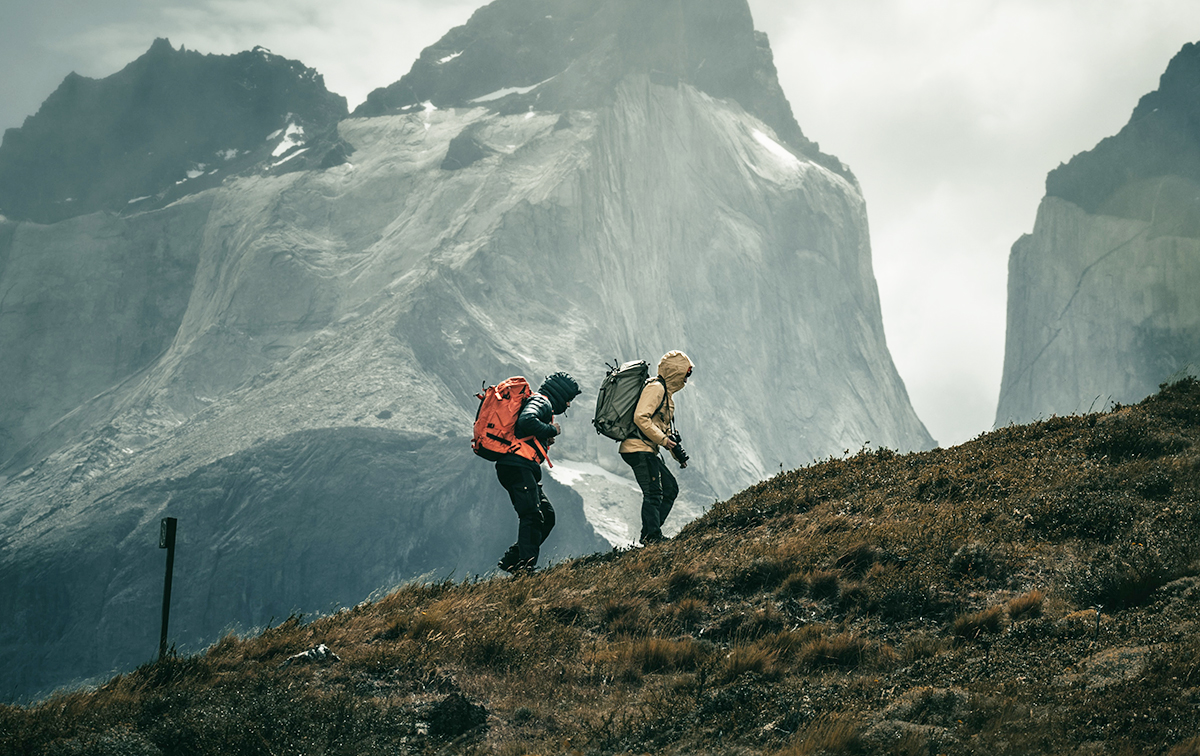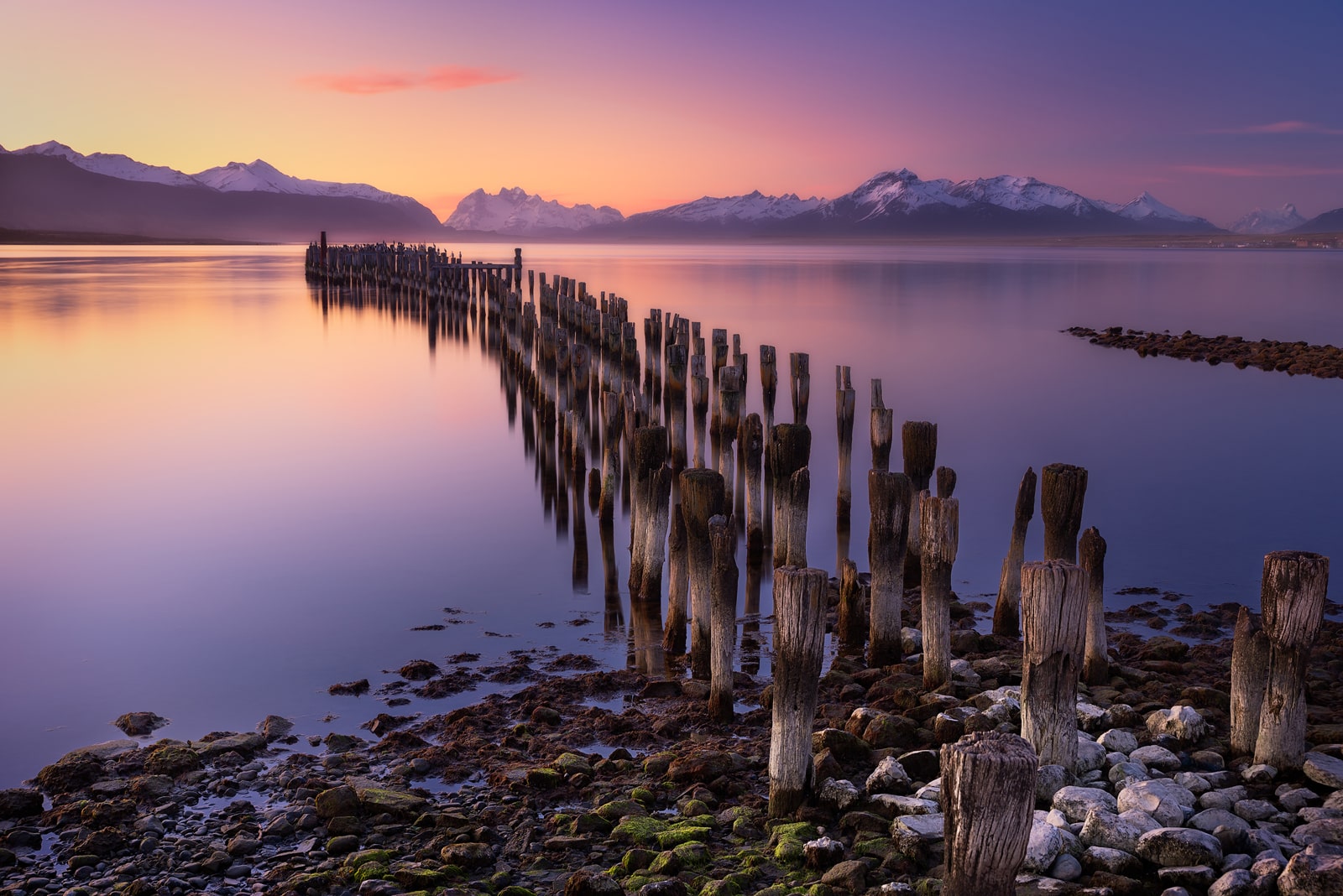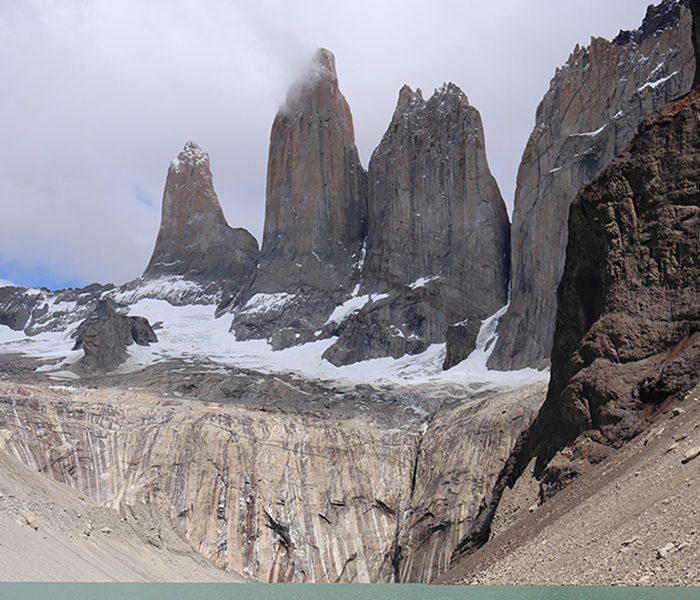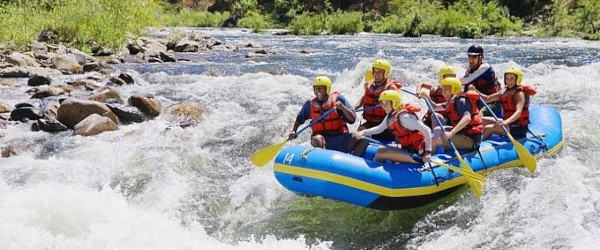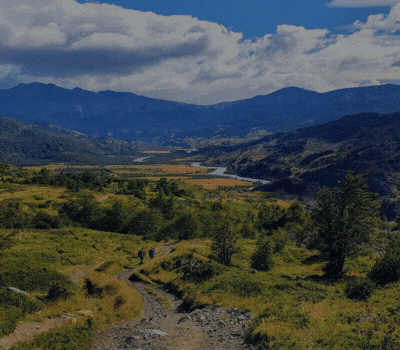If you are already planning your trip or simply dream of an adventure in Patagonia, I can tell you one thing: you have to visit the Torres del Paine National Park!
Considered by many one of the most beautiful places in the world for its landscape, you will find a wide variety of fauna and flora, in addition to the activities that you can do in the park.
Regardless of where you come from, this guide will help you plan one of the most beautiful trips of your life.
Whether by car, by bus or with the comfort of a guided tour, Torres del Paine National Park is becoming more accessible every day. Next, review the main attractions to enjoy the Mecca of trekking in Chilean Patagonia.
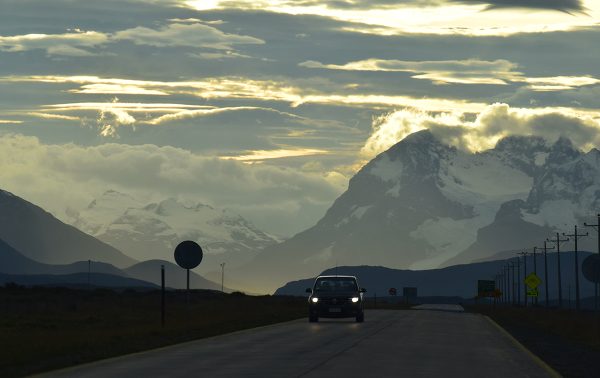
How to get to Torres del Paine Park
Once in Puerto Natales, getting to Torres del Paine will be easy. The way to the park is on a paved road and you can choose if you want to rent a car or go by regular bus.
Going by car to Torres del Paine
If you want to go by car, you will arrive faster and you will have the freedom of not depending on bus schedules. You can find the Rent a Car service at the Puerto Natales Bus Terminal.
To get to the park there are two routes available:
– Route 9, which connects Puerto Natales with the Sarmiento (112 km) and Amarga Lagoon (129 km) gates of Torres del Paine Park;
– Route Y-290, which connects Puerto Natales with the Serrano gates (80 km) of Torres del Paine Park;
It’s important to note that you’ll need to fill up before you hit the road, as there may not be a gas station along the way.
Going by Bus to Torres del Paine
Now, if you plan to go by bus, there are several bus companies that offer daily services to the park (at least during the high summer season). All you have to do is buy the ticket one day in advance at the Puerto Natales Bus Terminal itself.
Also, all bus companies operate in a similar way. They all make the same stops within the park and offer two outbound and two return times.
The first buses to the park leave at 7:00 a.m. and the last at 02:30 p.m. The journey will have at least three stops, the first being in Amarga Lagoon, then in Pudeto and finally in the Administration (Conaf).
To return to Puerto Natales, the schedule will depend on which stop you will take the bus, but the first departure from the Administration (Conaf) is at 1:00 p.m. and the last at 6:00 p.m.
Regarding prices, round trip tickets cost between CLP $10,000 – CLP $17,000.

Best time to go to Torres del Paine
First of all, it is important to say that the weather in Patagonia is unpredictable. A hot sunny day can change to a cold one with strong gusts of wind in the blink of an eye, regardless of the time of year.
However, due to its location at the southern tip of the continent, Torres del Paine Park is a seasonal destination and most people visit during the Chilean spring and summer (October to March).
In this period, especially in December, January and February, you can expect the park to be at capacity, with a large flow of tourists and many people on the trails.
That said, we recommend visiting the park in late November or early March, as most of the crowds have dispersed and you’ll still be able to take advantage of the nice weather (considering you’ll be in the far south of Chile).
Now, if you feel brave and ready for adventure, you have the option to visit in winter (May to September) and enjoy the park almost all to yourself.
Keep in mind that due to snow and low temperatures, you will have to stay in hotels or shelters instead of camping and be prepared for limited daylight hours.
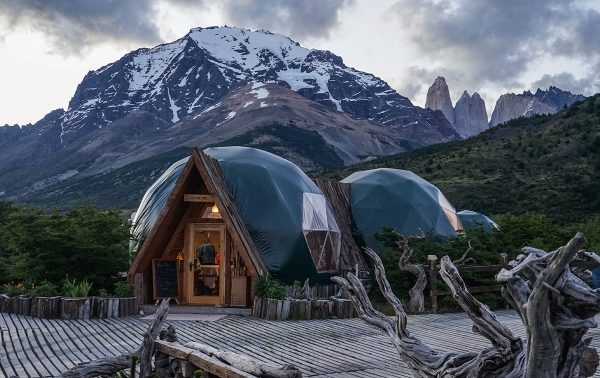
Accommodation in the Torres del Paine Park
First of all, it is important to say that regardless of which type of accommodation you prefer, it is crucial that you plan your trip and book your accommodation in advance. Next, you will learn about the options available within the park.
Camping in the Torres del Paine
If you think about doing the “W” or “O” circuit, you can choose to camp in the park. It is the cheapest option and the campsites are equipped with shared toilets and hot showers.
You can also choose between bringing your own tent and sleeping bag or paying a little more to rent a tent at the campsite (except in the free CONAF campsites), which is an excellent option for those who want to carry less weight and have more practicality. , once the tents will be set up.
Refuges in the Torres del Paine
Refuges are another type of accommodation you’ll find in the park, and are ideal for those who don’t want to camp and prefer to sleep in a bed after a long day of hiking. At the refuge, you will have a bed in a shared room, with bunk beds and shared bathrooms.
One of the benefits of the shelters is that they are much warmer and more protected from the Patagonian climate than being in a camping tent, and the price is not as high as in a hotel.
It should also be considered that most campsites and refuges offer food service for an additional cost.
Hotels in Torres del Paine
There is also the option of staying in the hotels that are inside the park. This is the perfect alternative for those who want to spend the night in a more comfortable place.
Most of the hotels are located in strategic points with beautiful views, facing lakes, valleys and mountains. In addition to taking advantage of a comfortable room, in many of them, you can also enjoy services such as spa treatment and baths in a jacuzzi and heated pool.
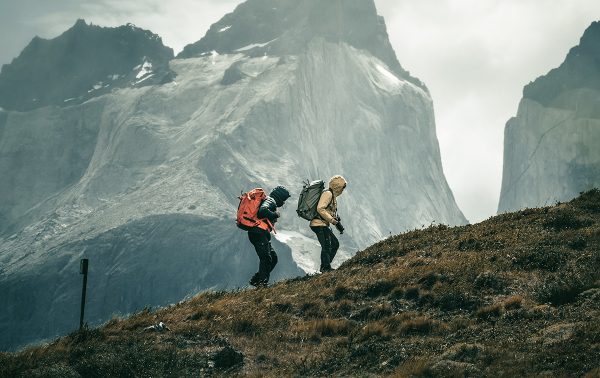
What to bring
Being an outdoor tourism destination, it is vital that you are prepared for outdoor activities. That said, we also recommend that you be prepared for all seasons, since, as already mentioned, the weather in Patagonia is unpredictable.
A good waterproof and windproof jacket is of the utmost importance so that you do not feel the impacts of the Magellanic wind so much, since this phenomenon is recurrent in the park. However, if you are going trekking, a pair of mountain boots is also essential.
If you will do one of the circuits and choose to camp with your own camping equipment, you will need a good tent suitable for cold and rain, a mattress, a winter sleeping bag and a stove. An important tip is that you should only cook in the places that are indicated and it is forbidden to make fires inside the park.
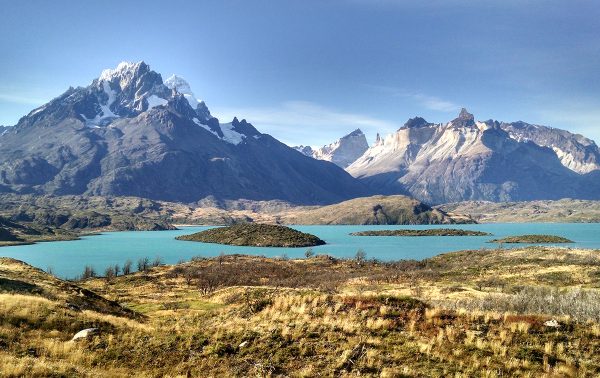
Torres del Paine Park ticket
Given the need for you to buy the entrance to the park, in the three gatehouses (Laguna Amarga, Sarmiento and Serrano) a cashier service will have been arranged, subject to the conditions of the telephone signal.
The price of the entrance to Torres del Paine National Park depends on factors such as age, nationality and if you want the ticket that is only valid for the day or the voucher that can be used for 3 consecutive days to enter the park.
We leave you the access fees to the park in the 2020-2021 season. You can check the updated rates on the Torres del Paine Park page.
- National, resident, foreign and disabled child up to (up to 11 years old) – free entry
- National or resident adolescent (12 to 17 years old) – CLP$3,600
- National or resident adolescent with a disability (12 to 17 years old) – free income
- Foreign adolescent (12 to 17 years old) – CLP$12,800
- National or resident adult – CLP$7,200
- National adult or resident with disability – CLP$3,600
- National or resident older adult (over 60 years old) – free income
- Foreign adult and older adult (includes those with disabilities) – CLP$25,600
- Voucher for 3 days (national) – CLP$10,300
- Voucher for 3 days (foreign) – CLP$35,900
Last consultation and update: May 2021.
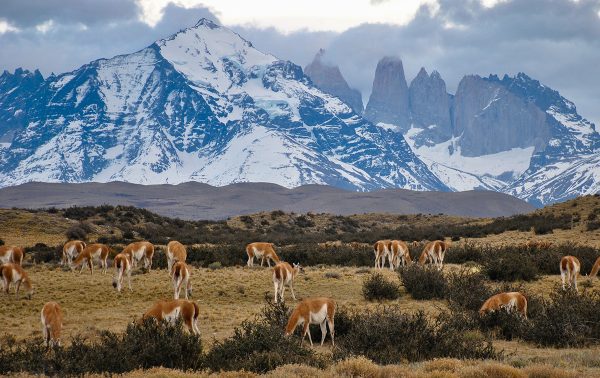
What to do in Torres del Paine National Park
Torres del Paine Park has a wild landscape to explore.
Surely, the best known trekking circuit is the W Circuit, a route made by many of the tourists who go to the park. On the other hand, for adventurers with some experience, O Circuit is certainly the option.
However, in the park you will also find alternative options, for those who prefer a shorter path or for those who are not physically fit for long walks.
Famous trails of Torres del Paine National Park
– Trekking Towers Base
It is true to say that the most famous trail and symbol of Torres del Paine Park is the Towers Base. Most tourists go to the park to do this trek and see the iconic granite towers up close.
With around 20 km of extension, it is a trail considered moderate-difficult level of difficulty. On the way you will go through ascents, valleys and irregular parts of stones.
Once at the Base of the Towers, you will be rewarded with the impressive view of the lagoon next to the three granite towers. Without a doubt, the landscape of the path and the viewpoint are among the most incredible that you can see in the park.
– Trekking French Valley
Also one of the main attractions of Torres del Paine Park, this deep valley is dominated by the magnificent French Glacier, forests and the French River.
Like the Towers Base Trek, its extension is approximately 20 km. In the case of those who do not want to do the W Circuit (or the O Circuit) but if they want to know the French Valley, they must take a catamaran that crosses Lake Pehoé to reach the Paine Grande sector.
The road crosses lenga forests, waterfalls and open spaces, which rises in some sections. Arriving at the viewpoint, you will be able to appreciate the spectacular views of the Nordenskjöld, Pehoe and Toro lakes with the mountains in the background.
– Trekking Grey Viewpoint
Also part of the trekking circuits, this trail will leave you impressed by its landscape, which has the great Grey Glacier as its protagonist.
In that walk you will travel around 12 km. In the same way as the French Valley Trek, if you are not doing any of the circuits, you must take a catamaran that crosses Lake Pehoé to reach the Paine Grande sector, where the trail begins.
I recommend this trail if you want to appreciate all the fullness of the Grey Glacier, which is part of the Southern Ice Fields. As well as seeing the icebergs floating in Lake Grey!
Alternative trails in Torres del Paine National Park
– Condor Viewpoint
A good alternative trail that we can mention is to the Condor Viewpoint. You will be able to appreciate a beautiful panoramic landscape of the Cordillera Paine (the Paine Grande hill, the Cuernos del Paine and the Almirante Nieto hill) next to the Pehoé and Nordenskjöld lakes.
With a distance of 2.5 km, the trail is considered an easy level of difficulty if you are used to hiking. The only complication is the final stretch of the trail, as it is an uphill part with some loose rock.
Reaching the summit, you will be shocked by the view and, possibly, the gusts of the Patagonian wind. In addition, as you can imagine from the name of this viewpoint, it is very likely to see a Condor flying nearby.
– Horns Viewpoint
The trail to Horns Viewpoint is perfect for all types of public. Whether you’re young or old, fit or not so fit as the trail is flat and doesn’t gain much elevation.
With a duration of approximately 2 hours, round trip, the route begins with the imposing waterfall of Salto Grande and is full of other attractions.
You will have the opportunity to see guanacos, Lake Nordenskjöld and one of the best views of the Paine Horns. In addition, in front of the viewpoint is also the French Valley. You won’t regret this trail!
– Trekking Cerro Ferrier
As an exclusive and unforgettable experience in Patagonia, the Cerro Ferrier trek has a privileged view of the entire Torres del Paine National Park complex.
The trek is a hard ascent, unmissable for photography lovers. With an average duration of 5 hours round trip along a steep path of medium-high difficulty, it is well signposted that it enters Cerro Ferrier, belonging to the Patagonian Andes.
You can see majestic Coihüe forest, habitat of many endemic birds and also the huemul, one of the most beautiful and elusive species in the park. As for the panoramic views, one of the most complete in Torres del Paine National Park stands out, in addition to being able to appreciate the Zapata and Grey glaciers belonging to the Southern Patagonian Ice Field.
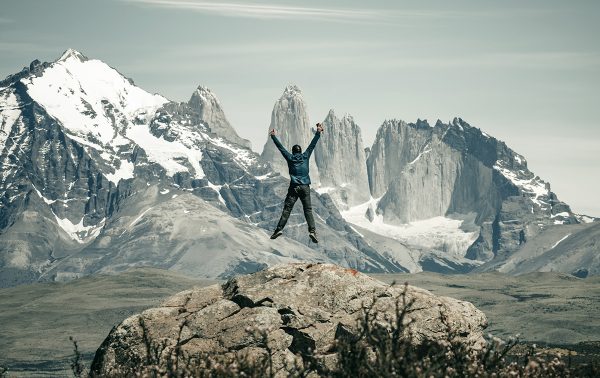
How to guarantee your next vacation in Torres del Paine?
As one of the southernmost destinations in the world, without a doubt, Torres del Paine is a place to visit at least once in your life.
You will find an experience in nature that will take your breath away. Torres del Paine Park is a pristine paradise filled with lush forests, colorful lakes, and towering mountains.
Of course, Torres del Paine is not just trekking. There is an infinity of Outdoor practices to enjoy in the park and its surroundings. From Fishing, Horseback Riding, Zodiac, Glacier Navigation, Kayaking, Climbing, Ice Walking and much more.
At Rebel Viajes, you will find not only a wide variety of day trip options, but also combined programs so you don’t have to worry about anything, just enjoy yourself. In addition, we have an exclusive consultant to support you and make your vacation a unique, exclusive and personalized experience, with payment facilities and security for your health and that of your family.
Contact us to know more!

